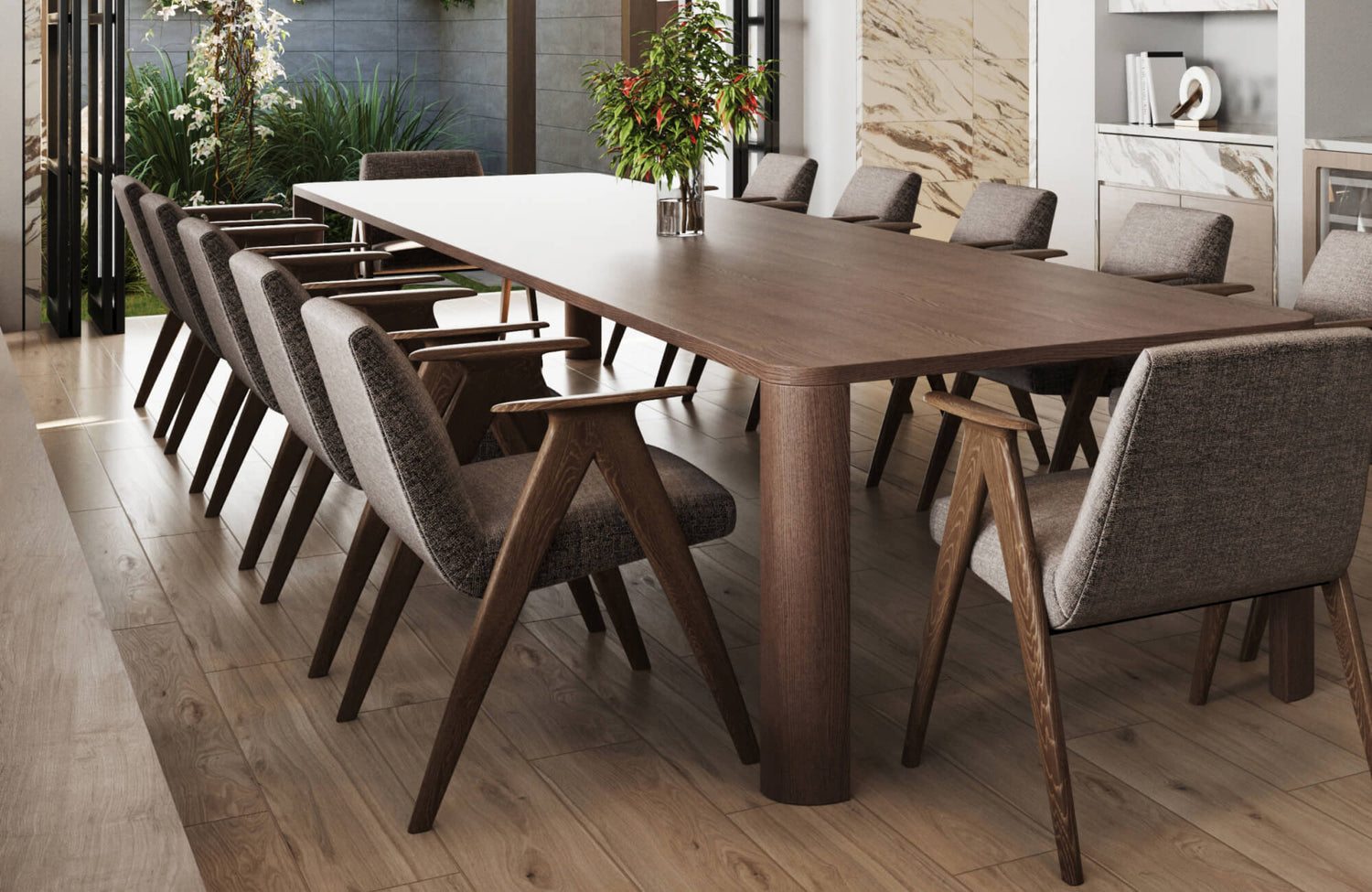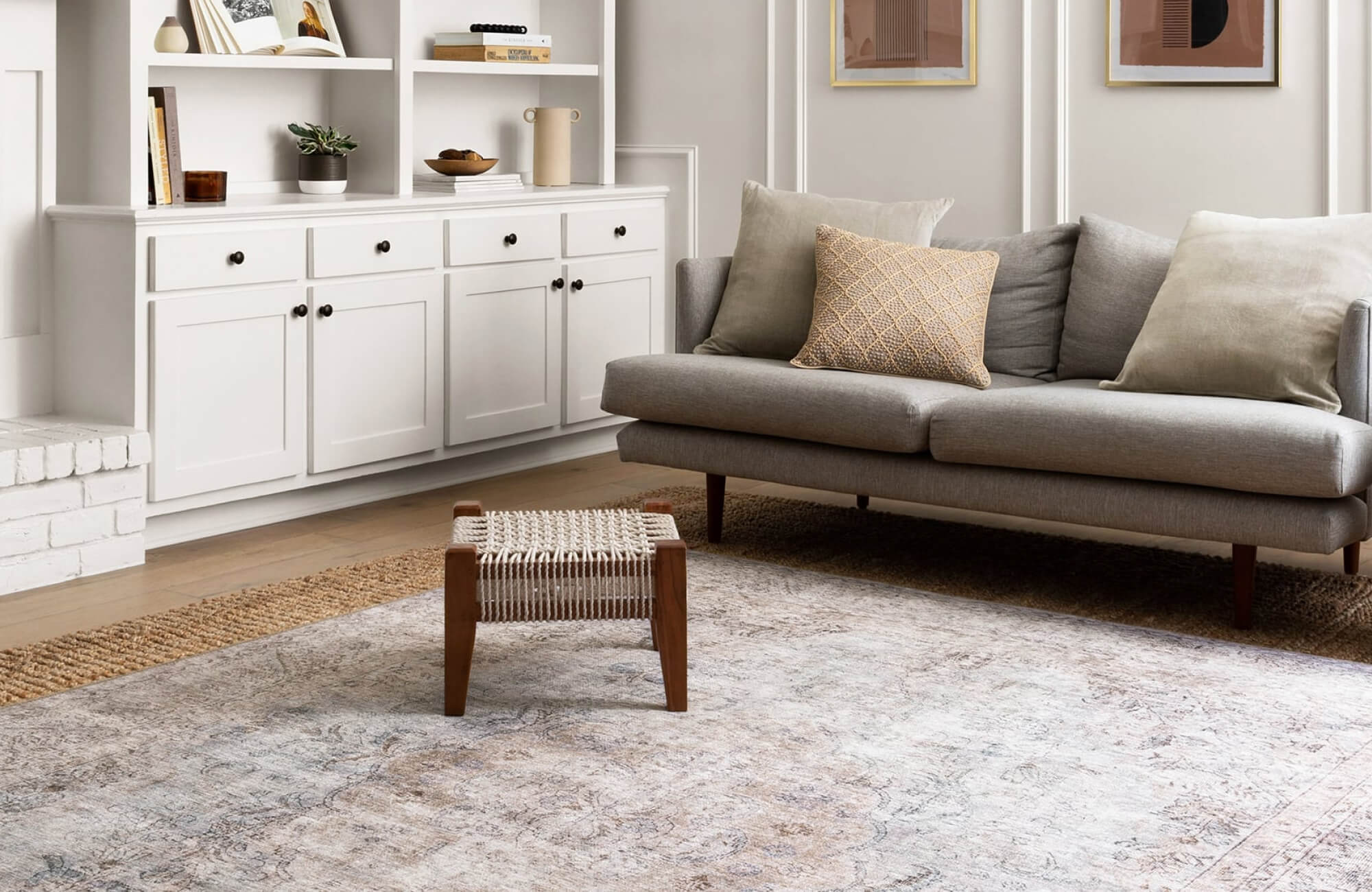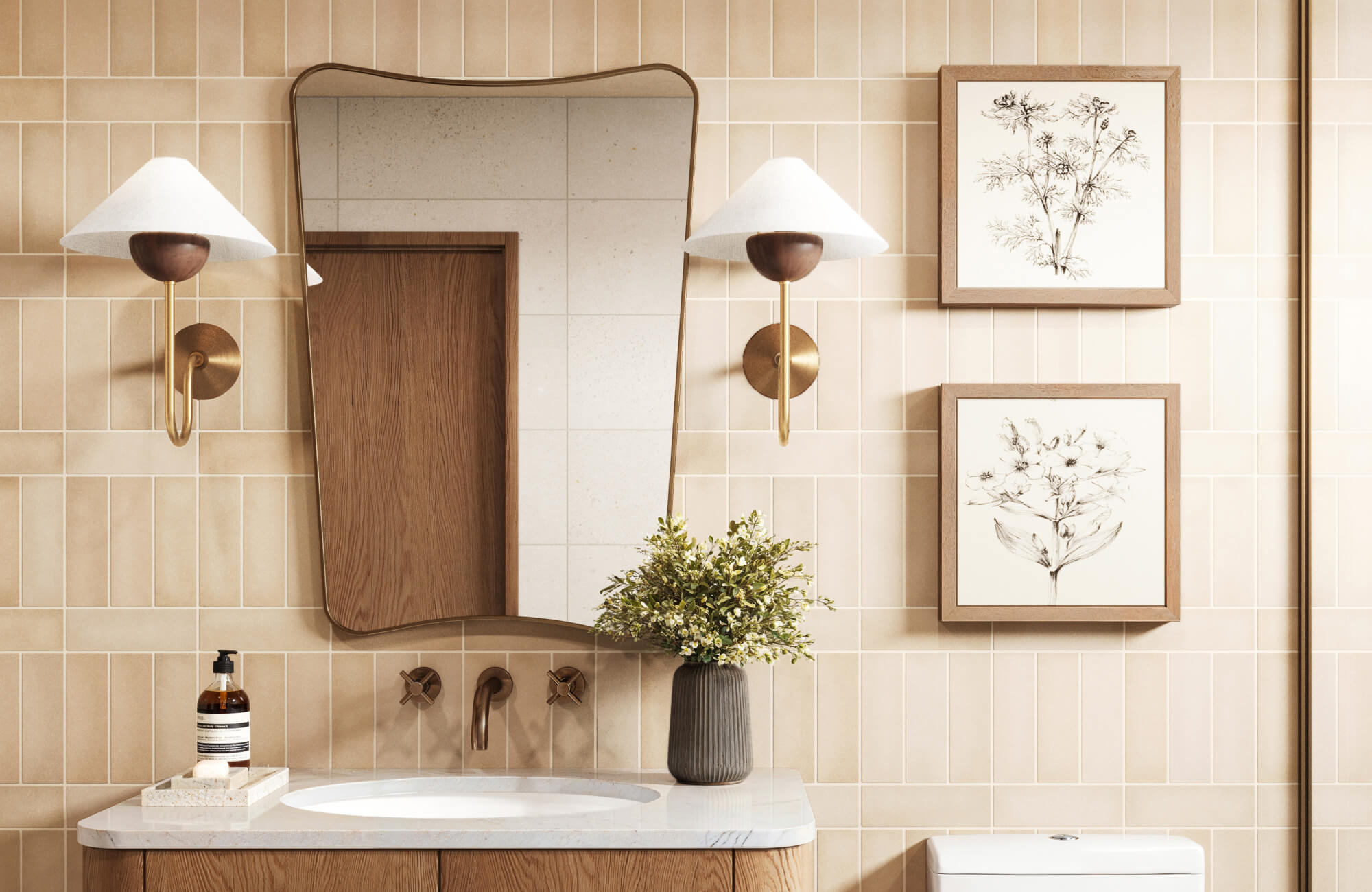Wood look tiles have grown in popularity, sparking debate over whether they are simply a passing trend or a flooring solution built to last. Although their realistic wood appearance is undoubtedly eye-catching, their appeal extends beyond aesthetics. With advancements in tile manufacturing, improved durability, and greater design versatility, wood look tiles have positioned themselves as more than just a fad.
In this article we will explore the practicality, durability, and technological advancements of wood look tiles, along with their role in evolving design trends, to provide insight into their long-term value.

The Rise in Popularity of Wood Look Tiles
The growing demand for wood look tiles reflects a shift in modern flooring preferences, blending aesthetics, durability, and sustainability. Their rise in popularity is fueled by advancements in manufacturing technology, eco-friendly innovations, and the need for stylish yet resilient flooring solutions.
Innovations in Tile Technology That Drive Popularity
One of the biggest reasons behind the widespread appeal of wood look tiles is the advancement of digital printing technology. Modern manufacturing techniques now enable the creation of highly detailed wood grain patterns, knots, and natural variations that closely resemble real hardwood. Additionally, some tiles feature embossed textures that mimic the feel of wood, adding both depth and authenticity. As a result, distinguishing wood look tiles from actual hardwood has become increasingly difficult, both visually and texturally, making them a compelling alternative.
Beyond their remarkable realism, technological advancements have also improved the overall performance of wood look tiles. Innovations in glazing techniques and surface treatments have led to enhanced slip resistance, making these tiles a safer option in areas such as bathrooms, kitchens, and outdoor patios. Additionally, manufacturers have developed more durable tile compositions that improve scratch, stain, and moisture resistance, ensuring that wood look tiles maintain their pristine appearance for longer periods. A great example of this innovation is the Jameson 8x48 Matte Porcelain Tile in Camel, featured in the photo above, which combines a highly durable porcelain construction with a matte finish that enhances both its longevity and warm light brown tones, creating a natural wood like aesthetic.
Another significant development in tile technology is the expansion of finish options. Wood look tiles are now available in a wide range of surface effects, including matte, grip, glossy, hand-scraped, wire-brushed, and distressed finishes, allowing them to capture the character of different wood species. These innovations also provide greater flexibility in customizing the look of a space, ensuring that wood look tiles seamlessly blend with a variety of interior and exterior design styles.
The Role of Sustainability in Their Rising Demand
Sustainability is a growing priority in modern design, prompting homeowners and designers to seek eco-friendly flooring that balances style and longevity. Unlike natural hardwood, which requires deforestation and regular upkeep, wood look tiles offer a responsible alternative without compromising aesthetics. Made primarily from porcelain or ceramic, they also eliminate the need for tree harvesting while still capturing the warmth and texture of real wood.
To further reduce environmental impact, many manufacturers are embracing greener production methods. Advancements in digital printing create realistic wood textures with minimal resource use, while energy-efficient kiln firing and water recycling helps conserve natural resources. Additionally, some porcelain wood look tiles incorporate recycled materials, reinforcing their sustainability. With these innovations, the industry continues to prioritize eco-conscious practices, ensuring wood look tiles remain a durable, low-maintenance, and environmentally responsible choice.
Are Wood Look Tiles Just a Passing Trend?
While some flooring styles fade with changing design preferences, wood look tiles have shown resilience in the market. Their continued demand is driven by their ability to offer a wood aesthetic without the limitations of natural hardwood. However, what ultimately determines whether they are a trend or a lasting choice is their adaptability to evolving interior design trends.
Unlike short-lived fads that peak in popularity before quickly becoming outdated, wood look tiles have integrated into a wide range of design movements. Their availability in various finishes and tones allows them to complement both contemporary and traditional interiors, ensuring they remain relevant as styles change. Additionally, their increasing use in both residential and commercial settings signals that they are not just a style preference but a practical investment for long-term flooring solutions.
Another factor that solidifies their longevity is their ability to align with growing consumer preferences for low-maintenance, high-performance materials. As homeowners and businesses continue to prioritize flooring that balances style, durability, and ease of care, wood look tiles remain a strong contender in the market. Their evolution. through new textures, colors, and layouts, further reinforces that they are more than a fleeting trend, but rather a design element that continues to adapt and endure.

How Durable and Practical Are Wood Look Tiles?
When choosing flooring, durability is just as important as style. While design trends evolve, a material that withstands daily wear remains timeless. Porcelain wood look tiles offer lasting strength, easy maintenance, and adaptability, making them a reliable flooring choice that never goes out of style.
Material Strength and Lifespan
Wood look tiles, crafted primarily from porcelain or ceramic, are designed to replicate the charm of hardwood and provide superior durability. Among the two, porcelain stands out as the denser and less porous option, making it highly resistant to moisture and stains. This composition allows wood look tiles to perform exceptionally well in areas where traditional hardwood struggles, such as bathrooms, kitchens, and basements.
As shown in the photo above, Edward Martin’s Jameson 8x48 Matte Porcelain Tile in Umber offers a rich, dark brown wood aesthetic while providing the durability needed for high-moisture environments. They are also fire-safe and can withstand temperatures up to 300°F, making them a reliable choice for areas exposed to heat, such as near fireplaces or kitchen stoves.
Beyond moisture resistance, wood look tiles also offer a more resilient surface compared to natural wood, which can easily scratch, dent, or show signs of aging over time. With a hardness rating on the Mohs scale ranging from 6 to 7, which is significantly higher than most hardwood species (typically falling between 2.5 and 4), wood look tiles are far less susceptible to damage from pet claws, high heels, or moving furniture.
But even with their impressive durability, they are not completely impervious to damage. Strong impacts from heavy objects can cause chipping or cracking, especially in high-use areas. For this reason, manufacturers provide PEI (Porcelain Enamel Institute) ratings as a guide to help consumers choose the appropriate tile strength for their specific needs. Additionally, using area rugs or felt pads under furniture can further minimize the risk of damage and preserve the tile’s longevity.
Low Maintenance and Easy Care
Beyond durability, porcelain wood look tiles stand out for their effortless maintenance. Unlike hardwood, which requires frequent refinishing, sanding, and sealing, wood look tiles retain their beauty with minimal upkeep. Regular sweeping and occasional mopping with a mild pH-neutral cleaner is all it takes to keep them in excellent condition. Since they don’t require protective coatings or treatments, they maintain their original appearance for years without the ongoing maintenance hardwood demands.
Hardwood, by contrast, requires diligent care to prevent scratches, water damage, and fading. Even with proper upkeep, refinishing is often necessary every few years, adding to long-term costs. Certain wood finishes wear faster in high-use areas, making them less practical for homes with children or pets. While refinishing hardwood can restore its look, wood look tile offers a hassle-free, long-lasting alternative that preserves its appeal with minimal effort.
Wood Look Tile vs. Other Flooring Materials
Wood look tile offers a stylish, durable alternative to traditional hardwood, but how does it compare to other flooring materials? Examining its advantages over options like luxury vinyl plank and natural stone reveals whether it's a passing trend or a lasting investment. We'll also explore how marble look tiles complement wood look tiles, offering a refined balance of warmth and elegance in home design.
Luxury Vinyl Plank
Luxury vinyl plank (LVP) is a popular flooring choice due to its affordability, comfort underfoot, and ease of installation. Its slight flexibility provides cushioning, reducing foot fatigue, especially in areas like kitchens where people stand for long periods. However, LVP is more susceptible to surface damage, with scratches, dents, and fading becoming noticeable over time. While marketed as water-resistant, prolonged exposure to moisture or standing water can cause warping or peeling, limiting its durability in high-moisture areas.
Wood look tiles, by contrast, offer superior durability, making them a better choice for bathrooms, laundry rooms, and kitchens. Unlike LVP, which may wear out faster, tiles maintain their structural integrity for decades with minimal upkeep. They are also fully water-resistant, eliminating concerns about swelling or deterioration. While installation requires more effort than LVP’s simple click-lock system, the long-term benefits make them a worthwhile investment. Additionally, wood look tiles provide a firmer surface that won’t shift or flex over time, ensuring lasting performance in busy spaces.
Natural Stone
Natural stone is a premium flooring choice known for its elegant, organic appeal. Materials like travertine, slate, and marble offer timeless charm, making them a staple in upscale interiors. However, they require extensive maintenance. Their porous surfaces need regular sealing to prevent staining and moisture damage, yet some stones still absorb liquids, leading to discoloration over time. Softer options like travertine are also prone to scratches and etching, requiring extra care to preserve their finish.
Wood look tiles offer a comparable aesthetic without the upkeep. Unlike stone, which can feel cold and requires specialized cleaning, they are low-maintenance and can be paired with underfloor heating for added comfort. Their consistent finish eliminates the natural variation of stone, making design planning easier. Additionally, natural stone tends to be more expensive in both material and installation due to the need for skilled labor. Wood look tiles, by contrast, combine the warmth of wood with the sophistication of stone, providing a cost-effective, durable solution that maintains its beauty with minimal effort.
Marble Look Tiles
While wood look tiles bring warmth and durability, some homeowners and designers prefer a polished, luxurious aesthetic. Marble look tiles offer the timeless elegance of natural stone with the durability and low maintenance of porcelain, making them a sophisticated alternative to real marble.
For instance, the Aniston 24x48 Polished Porcelain Tile in Carrara Bianco captures the classic beauty of Carrara marble while delivering the resilience of porcelain. Advanced digital printing replicates intricate veining and depth, creating a striking visual without the upkeep of natural marble. Unlike real stone, which is porous and requires regular sealing, marble look tiles are non-porous and highly resistant to stains and moisture, making them ideal for bathrooms, kitchens, and other high-humidity areas.
Wood look and marble look tiles can also work together effortlessly, allowing you to blend natural warmth with refined elegance for a cohesive, balanced design. For instance, a bathroom with wood look tile flooring and marble look tile shower walls creates a harmonious contrast, while in open-concept spaces, wood look tiles add warmth underfoot as marble look tiles elevate kitchen backsplashes or fireplace surrounds.
Both wood look and marble look tiles offer durability, scratch resistance, and easy maintenance while catering to different design preferences. Wood look tiles create a warm, inviting atmosphere, whereas marble look tiles exude sophistication, making them ideal for spaces that demand a sleek, high-end finish.

The Aesthetic and Design Flexibility of Wood Look Tiles
Wood look tiles remain a design staple, balancing timeless appeal with modern versatility, unlike fleeting flooring trends. Their realistic textures, diverse finishes, and layout options, such as herringbone and chevron, allow them to complement a range of styles from rustic to contemporary. As design trends evolve, their adaptability ensures they stay relevant, offering both aesthetic appeal and long-term practicality.
Creative Layout and Application Options
One of the greatest advantages of wood look tiles is their design versatility, offering more layout possibilities than traditional hardwood. While standard plank installations remain a classic choice, many are embracing decorative patterns to add visual interest. For instance, herringbone, chevron, and basketweave designs introduce movement and sophistication, making floors or walls stand out as striking design elements. Unlike natural wood, which often requires custom cutting and extensive labor for these intricate patterns, wood look tiles are designed for easier installation, helping to reduce both material waste and overall costs.
Beyond flooring, wood look tiles have evolved into a versatile design element, extending far beyond the limitations of hardwood. Their adaptability makes them just as effective outdoors, seamlessly blending patios, pool surrounds, and covered decks with indoor living areas while maintaining both style and durability. Thanks to their moisture resistance, they’re also ideal for high-humidity spaces, providing both aesthetic appeal and practical performance.
In bathrooms, for example, they work beautifully on shower walls, bringing the warmth of natural wood into a spa-like setting without the risk of water damage. A great example is Edward Martin’s Zayne 12x36 Matte Ceramic Tile in Slat, as displayed in the photo above. This tile features deep brown tones and a matte finish, offering a refined wood-inspired look while ensuring long-lasting durability in wet environments.
If you're unsure how a particular tile will look in your space, our augmented reality (AR) technology allows you to preview different wood look tile options in real time. This tool makes it easy to visualize your selection, helping you confidently choose the perfect style and finish
Adapting to Different Interior Styles
Wood look tiles seamlessly integrate into a variety of interior aesthetics, making them a valuable choice if you want both timeless appeal and modern design flexibility. Their ability to complement different décor styles ensures they remain relevant even as design trends evolve, allowing you to invest in a long-lasting flooring option without worrying about it becoming outdated
Rustic and Farmhouse
For rustic and farmhouse interiors, distressed, matte-finish wood look tiles effectively replicate the charm of reclaimed wood, enhancing both the warmth and authenticity of the space. These tiles pair well with exposed beams, vintage furnishings, and neutral color palettes, further contributing to an inviting, lived-in atmosphere that feels both traditional and comfortable. Their weathered appearance not only adds a sense of history and character but also makes them an excellent choice if you appreciate the rustic charm of aged wood yet prefer a lower-maintenance alternative to real reclaimed planks.
Contemporary and Minimalist
In contemporary and minimalist settings, large format wood look tiles in soft, neutral tones contribute to a clean and streamlined aesthetic. When installed with minimal grout lines, they create a seamless, modern look that complements open-concept layouts and sleek furnishings. Their understated design also allows other architectural elements, such as statement lighting or bold furniture pieces, to take center stage without overwhelming the space. Additionally, the subtle wood grain detailing in these tiles adds warmth to minimalist interiors, preventing them from feeling too cold or sterile. As a result, they provide the perfect balance of sophistication and comfort, making them an excellent choice for modern homes.
Transitional or Classic
Medium-toned wood look tiles with subtle grain patterns create a perfect balance between traditional charm and modern sophistication. Their warm, natural tones complement classic furniture, rich wood finishes, and elegant upholstery while maintaining a fresh, contemporary feel. Unlike overly rustic or ultra-modern options, they blend old and new seamlessly, making them ideal for timeless interiors with a modern twist. Their versatility allows them to suit different aesthetics, whether paired with decorative moldings and vintage accents for a classic look or combined with sleek, minimalist décor for a refined yet inviting space. With their enduring appeal, they provide a lasting foundation that evolves with your style over time.
Will Wood Look Tiles Stay in Style?
Wood look tiles have established themselves as more than a passing trend, combining durability, versatility, and timeless appeal. Their realistic wood aesthetics, resistance to moisture and wear, and ability to complement a wide range of styles also make them a lasting choice for both homes and commercial spaces. With continuous advancements in tile technology enhancing their realism and adaptability, they remain a smart and stylish flooring solution that stands the test of time.
To fully appreciate their aesthetic and functional benefits, seeing wood look tiles in person can be invaluable. At Edward Martin, you'll find a wide selection of wood look tiles, and exploring samples can help you visualize how they will complement your design. By requesting samples, you can see the colors, textures, and finishes up close, ensuring the perfect fit for your project.









